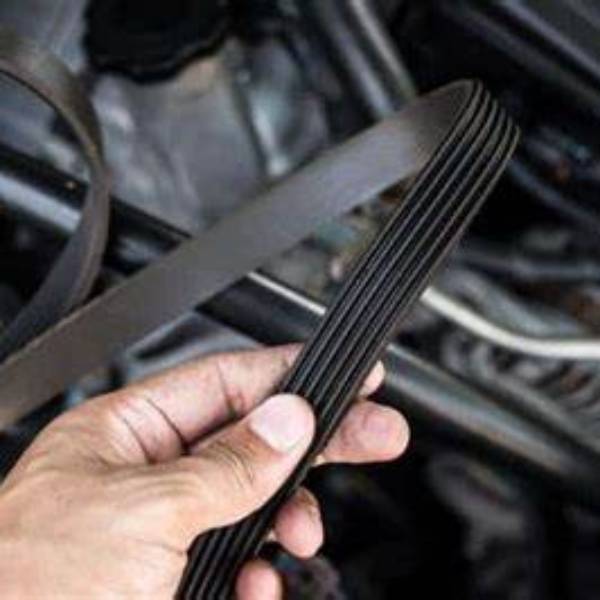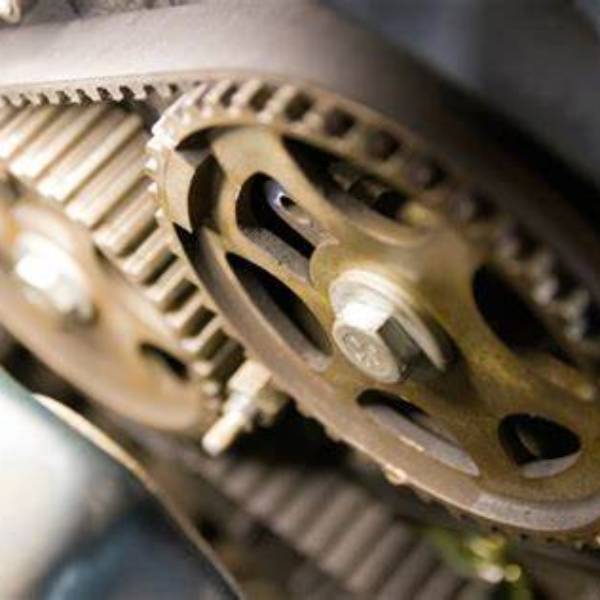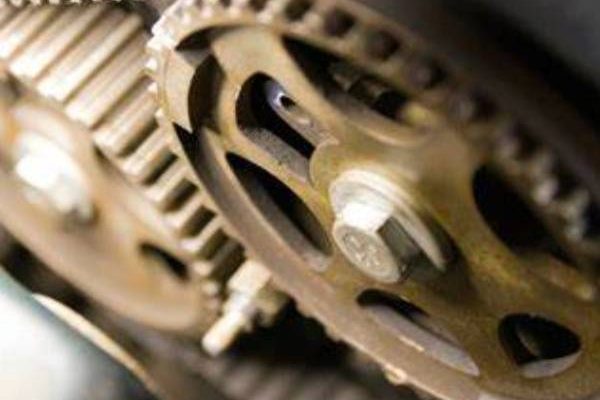Understanding the Serpentine Belt
Importance of the Serpentine Belt
The serpentine belt plays a vital role in your vehicle’s performance. It connects multiple engine components and ensures they function smoothly. The belt powers the alternator, which generates electricity for starting and running the vehicle. It also drives the power steering pump, allowing you to steer effortlessly. Additionally, it powers the air conditioning compressor, providing comfort in hot weather. Thus, a functioning serpentine belt is essential for overall vehicle efficiency and comfort.

Symptoms of a Malfunctioning Serpentine Belt
Watching for symptoms of a malfunctioning serpentine belt can save you time and money. Listen for any unusual noises, such as squealing or chirping, which may indicate wear. Check for physical signs, like cracks or fraying on the belt’s surface. If your vehicle’s steering feels heavy, you might have a problem with the power steering pump. Also, notice if the air conditioning blows warm air instead of cooling. Such issues often point to a deteriorating serpentine belt.
Addressing these symptoms quickly can prevent more severe engine problems. Regular inspection of the belt can help ensure it remains in good condition. Make it a part of your routine maintenance to enhance vehicle longevity. Doing so minimizes the risk of breakdowns and keeps your car running efficiently. Prioritize understanding these symptoms to maintain your vehicle’s performance.
Common Serpentine Belt Symptoms
Identifying Serpentine Belt Symptoms
Recognizing the signs of a failing serpentine belt is crucial. Squeaking or squealing noises from the engine often signal a problem. You should pay attention to these sounds, especially during engine startup. If you hear them, the belt might be loose or worn out. This issue can lead to further damage, and repairing it could be costly. Additionally, engine performance may decline when the serpentine belt fails. Therefore, early detection can save you both time and money.
Preventive Measures to Consider
To avoid potential problems, regularly inspect your serpentine belt. Look for signs of wear, such as fraying or cracking. A visual examination can help you catch issues early. If you see any damage, replace the belt immediately. Doing so prevents more severe engine complications. Furthermore, listen for unusual noises when you start your vehicle. These sounds can warn you of impending belt failure. If you notice anything unusual, consult a mechanic right away.

Routine maintenance can also extend the life of the serpentine belt. Regular servicing allows mechanics to address small issues before they escalate. By staying vigilant, you can ensure your vehicle remains in excellent condition. Taking these steps will not only help your engine perform optimally but also enhance your overall driving experience.
Check for Cracks and Wear
Inspecting for Damage
Visual wear indicates potential problems with your serpentine belt. Therefore, you should conduct regular inspections to catch any issues early. Look closely for cracks, fraying, or other signs of wear. A healthy serpentine belt appears smooth and consistent without any visible damage. If you notice any irregularities, such as cracks or significant fraying, take action immediately. Waiting too long can lead to belt failure and serious engine problems. Replace the serpentine belt at the first sign of damage to maintain optimal performance.
Importance of Timely Replacement
Timely replacement of a damaged serpentine belt saves you from costly repairs in the future. A worn belt can lead to various performance issues, so don’t ignore warning signs. Inspect your belt every few months to ensure longevity and functionality. Regular maintenance helps you avoid breakdowns and keeps your engine running smoothly. You can often visually assess the condition of the belt during routine oil changes.
Being proactive about inspections can extend the life of your vehicle. When you stay vigilant, you minimize the risk of unexpected failures. Understanding the importance of your serpentine belt ensures better vehicle reliability. Always prioritize this simple yet crucial aspect of your car’s maintenance. Your engine depends on it for power distribution and overall efficiency. Ultimately, regular inspections and timely replacements lead to a smoother driving experience.
Poor Performance of Accessories
Understanding the Serpentine Belt’s Role
Your vehicle relies on various accessories for optimal performance, and the serpentine belt plays a crucial role. When the serpentine belt fails, it affects multiple systems, including power steering and air conditioning. If these systems show signs of poor performance, you should check the serpentine belt immediately. For example, a stiff steering wheel can indicate that your power steering system struggles due to insufficient power. Similarly, if your air conditioning system fails to cool, the problem may lie with the serpentine belt. This situation often leads to discomfort and frustration for drivers, especially during hot weather.

The Importance of Regular Maintenance
Maintaining your serpentine belt is essential for ensuring your vehicle’s safety and reliability. Regular checks can help identify wear and tear before they become serious issues. Therefore, inspect the belt for cracks, fraying, or glazing at least twice a year. Additionally, listen for unusual noises, as these can signal that the belt is slipping or misaligned. Addressing these issues quickly can prevent expensive repairs and enhance your driving experience.
Failing to replace a worn serpentine belt can lead to more severe problems like overheating or battery failure. Thus, you ensure not just your convenience but also your safety on the road. Investing in preventive maintenance preserves the lifespan of your vehicle and keeps its systems running smoothly. Safe driving should always be a priority, and a well-maintained serpentine belt significantly contributes to that goal.
Engine Overheating Signs
Overheating is another significant serpentine belt symptom. The serpentine belt drives the water pump, which is crucial for cooling the engine. If the belt slips or breaks, the water pump may fail to circulate coolant effectively, leading to increased engine temperatures. Regularly monitoring your engine temperature is vital for preventing permanent damage.
Battery Warning Light
A flashing battery warning light on your dashboard can indicate a problem with the serpentine belt. This serpentine belt symptom happens when the belt cannot drive the alternator efficiently. If the alternator fails to charge the battery, your vehicle may experience starting issues or erratic electrical behavior.
Increased Fuel Consumption
An often-overlooked symptom is increased fuel consumption. When the serpentine belt does not operate properly, it can lead to inefficient engine performance. This inefficiency can manifest as increased fuel usage. If you notice a drop in fuel economy, inspect your serpentine belt for potential issues. If you’re experiencing increased fuel consumption due to inefficient engine performance, learning how to tighten the serpentine belt may help improve fuel economy and ensure your engine runs smoothly.
Ignoring Symptoms Can Lead to Larger Problems
Ignoring signs of a failing serpentine belt can lead to more significant issues. If the belt snaps, it can cause severe engine damage. Components that rely on the belt may malfunction or become damaged. To avoid costly repairs, pay attention to these serpentine belt symptoms and act accordingly. Listening for serpentine belt noise is crucial, as ignoring it can signal potential failure that may lead to extensive engine damage and costly repairs. Stay vigilant for any unusual sounds, and address them promptly to ensure your vehicle remains in optimal condition.
Regular Maintenance is Key
Preventive maintenance plays a critical role in ensuring the longevity of your serpentine belt. Regular inspections and timely replacements can help you avoid the symptoms associated with a failing belt. Consider checking your serpentine belt during routine oil changes or service appointments. Understanding a serpentine belt diagram can be invaluable for recognizing signs of wear and knowing when to schedule inspections, ensuring your vehicle runs smoothly and prolonging the life of the belt.
Conclusion: Stay Alert to Serpentine Belt Symptoms
Staying alert to the serpentine belt symptoms can protect your vehicle’s health. By recognizing signs early and taking action, you can prevent extensive damage and costly repairs. Always prioritize regular vehicle maintenance to enjoy a smooth and safe driving experience. If you suspect issues with your serpentine belt, consult a professional mechanic immediately. Your vehicle deserves the best care.
